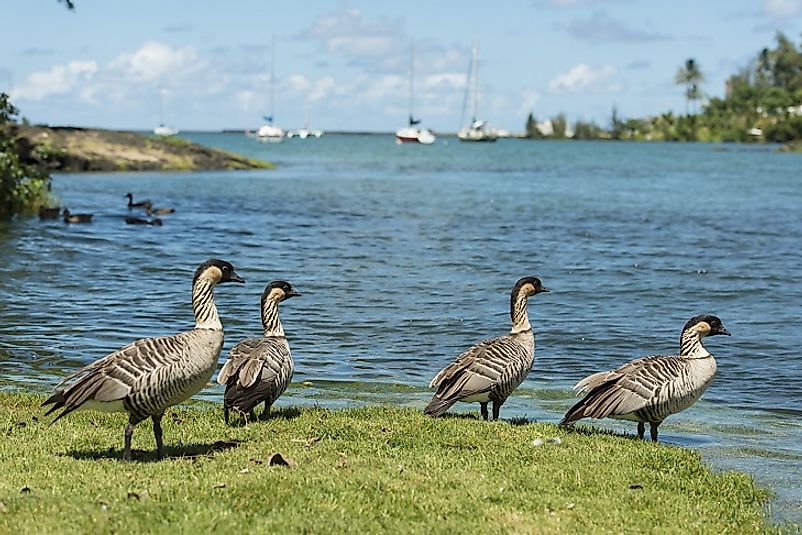Why Are Species In Hawaii Going Extinct At Such A Rapid Rate?

5. Species Most Vulnerable
The tropical archipelago of Hawaii in the Central Pacific Ocean is regarded as a paradise for vacationers travelling from all across the world to enjoy the sun, sands and sea of Hawaii’s picturesque islands. However, for the thousands of native non-human species inhabiting this United States archipelago, Hawaii is no longer a safe and secure place. Labelled as the “extinction capital of the world”, Hawaii is currently losing its species at an alarmingly fast rate, which if not checked fast, will lead to catastrophic consequences. As per the most recent estimates, 4 mammalian species including the sperm whale and the humpback whale, and two endemics, the Hawaiian monk seal, and the Hawaiian hoary bat, are endangered in Hawaii. One of the worst fates has been met by snails on the island, of which 25 species only survive and 9 are endangered. Birds in Hawaii are also facing a severe crisis where nearly 50% of the 140 species of birds have been lost. The worst fate awaits the endemic species of birds, including Hawaiian hawks, Hawaiian gooses (nenes), and Maui parrot-bills, which, once lost from Hawaii, can never be recovered again. It is not only the Hawaiian fauna, but also several species of rare and endemic Hawaiian flora, that are also on the brink of extinction as well.
4. Why Hawaii?
The loss of species in Hawaii is not new news. The loss began as early as the 7th Century when Polynesian migrants started arriving on the island accompanied by their dogs, chicken, and pigs, invasive species which triggered the death and destruction of Hawaiian endemics. A second spate of destruction began in the 18th and 19th centuries when vast tracts of Hawaiian forests were cleared for sandalwood trees and Hawaiian birds were hunted down in thousands for their colorful feathers to adorn the decorated caps worn by the nobility. Large areas of native vegetation were also lost to livestock grazing during this period. With the arrival of the Europeans in the late 18th Century, the Hawaiian species suffered a new round of death and destruction when vast tracts of native forests were cleared for sugarcane plantations and grazing lands. The destruction continued into the 20th Century and soon, other factors like the influx of large volumes of tourists to the archipelago, growth of human habitation on these islands, global warming and climate change, extraction of natural resources for human consumption, all led to the wanton destruction of Hawaiian ecosystems.
3. Trends for the Future
Presently, though Hawaii occupies only 0.25% of the territorial space of the United States, 25% of the endangered species of the country are located on this Pacific Island archipelago. The figure thus portrays a very grim picture of the future if sufficient measures are not implemented to save the species. If the loss of species continues at the present rate, there is a possibility that many more Hawaiian endemics might become completely extinct from the face of the Earth in the next few decades. This race for extinction will be further sped up by global climate change, leading to higher temperatures and sea-level rise, subjecting the native species to significant amounts of stress.
2. Relevance to Global Mass Extinctions
The situation in Hawaii today represents what is happening all around the world. Mass die-off of species is occurring at a fast rate, and isolated islands, such as Hawaii, those of the Galapagos, and Madagascar, each with a significant number of endemic species, face a greater risk of species extinction. Furthermore, once these endemic species die off, there is no other population of these species in the other areas of the world to replace the regionally extinct populations. Global climate change is further changing vegetation patterns and species distribution in these sensitive habitats, leading to a decline in the species numbers who are unable to adapt themselves fast to the rapidly changing climate.
1. What Can Be Done?
Experts studying the threatened species in Hawaii claim that not enough is being done to save the species from extinction. In 2013, only 5% of the federal grant for endangered species program was allotted to Hawaii. Experts also believe public compassion and awareness for this loss of species in Hawaii is highly lacking. Future plans of conservation thus should focus on allocating large amounts of funds towards conservation of Hawaiian species. There is also a need to accelerate the awareness campaigns to inform the common man of the grievousness of the situation and act accordingly. Support needs to pour in from all sectors, federal and state governments, public, media and conservation organizations, to save the beautiful and exotic flora and fauna of Hawaii.











